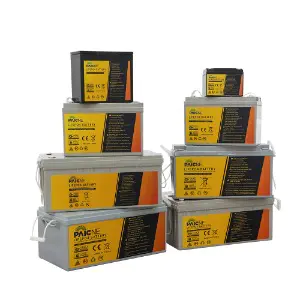Understanding Thermal Runaway and Battery Chemistry
Thermal runaway is a dangerous condition in batteries where an increase in temperature causes a self-sustaining reaction, often resulting in fire or explosion. This chain reaction is typically caused by internal short circuits, overcharging, or external heat sources, and it is a major safety concern for many lithium-ion battery chemistries. The likelihood of thermal runaway is largely determined by the materials used in the battery’s construction, particularly the cathode. In this regard, the Lithium Iron Phosphate Battery exhibits fundamental advantages due to its inherently stable chemical structure.

Structural Stability Reduces Fire Risk
One of the core reasons this battery type is less prone to thermal runaway is its phosphate-based cathode material. Unlike nickel-rich chemistries such as NMC or NCA, which release oxygen under high heat or stress, lithium iron phosphate does not decompose easily and does not emit flammable gases. This greatly reduces the chances of internal combustion, even when subjected to high temperatures or electrical abuse. As a result, this battery chemistry is considered safe for applications where thermal control is critical, such as in electric buses, stationary energy storage, and residential solar systems.
High Thermal Threshold for Decomposition
In laboratory tests, the temperature at which this battery chemistry begins to break down is significantly higher than that of other lithium-ion types. While many batteries enter thermal runaway around 150°C to 200°C, a Lithium Iron Phosphate Battery typically withstands temperatures up to 250°C before exhibiting thermal instability. This makes it far more resistant to heat-induced failure, especially in applications that operate under demanding thermal conditions or in locations with poor ventilation.
Behavior Under Electrical Abuse Conditions
Overcharging and short-circuiting are two scenarios that can cause rapid internal heating in batteries. While many chemistries respond to these conditions with volatile reactions, this battery type tends to absorb such stress more passively. Even when subjected to overvoltage, the thermal buildup is gradual rather than explosive, giving thermal management systems time to respond. In short-circuit tests, the absence of rapid gas expansion or flammable reactions further demonstrates the battery’s ability to resist transitioning into thermal runaway.
Battery Management and Safety Systems
Although this battery chemistry is less likely to enter thermal runaway, it is still used in conjunction with advanced battery management systems (BMS). These systems monitor temperature, voltage, and current to ensure the battery remains within safe operating limits. If abnormal conditions arise, the BMS can isolate the affected cells, disconnect the battery, or trigger a controlled shutdown. The combination of intrinsic thermal stability and intelligent control mechanisms creates a layered safety approach that reduces the risk of runaway reactions.
Real-World Application and Track Record
In real-world use, this battery technology has demonstrated a low incidence of thermal events compared to other lithium-ion chemistries. Its widespread adoption in public transportation, off-grid power systems, and mobile medical devices is partly due to this track record of safety. With thousands of installations globally, and many operating for years without major incident, the data supports the conclusion that this battery is one of likely to experience thermal runaway under standard or even adverse conditions.
Conclusion: A Chemically Stable and Thermally Safe Option
In conclusion, the risk of thermal runaway in a Lithium Iron Phosphate Battery is significantly lower than in other lithium-ion types, thanks to its stable chemical composition, high thermal resistance, and predictable response to stress. While no battery is completely immune to failure, this technology provides a level of safety and reliability that makes it particularly well-suited for applications where heat management and long-term performance are essential. When combined with proper system design and monitoring, it offers a dependable energy storage solution with thermal risk.
Get to know quickly
We are a professional lithium iron phosphate battery, solar energy storage system, industrial and commercial energy storage system manufacturer.
 +86-133 3592 3377
+86-133 3592 3377
 +86-4008833583
+86-4008833583
 Email: [email protected]
Email: [email protected]

Copyright © Zhejiang Paichen Energy Storage Group Co., Ltd All Rights Reserved.
Battery Energy System Manufacturer
